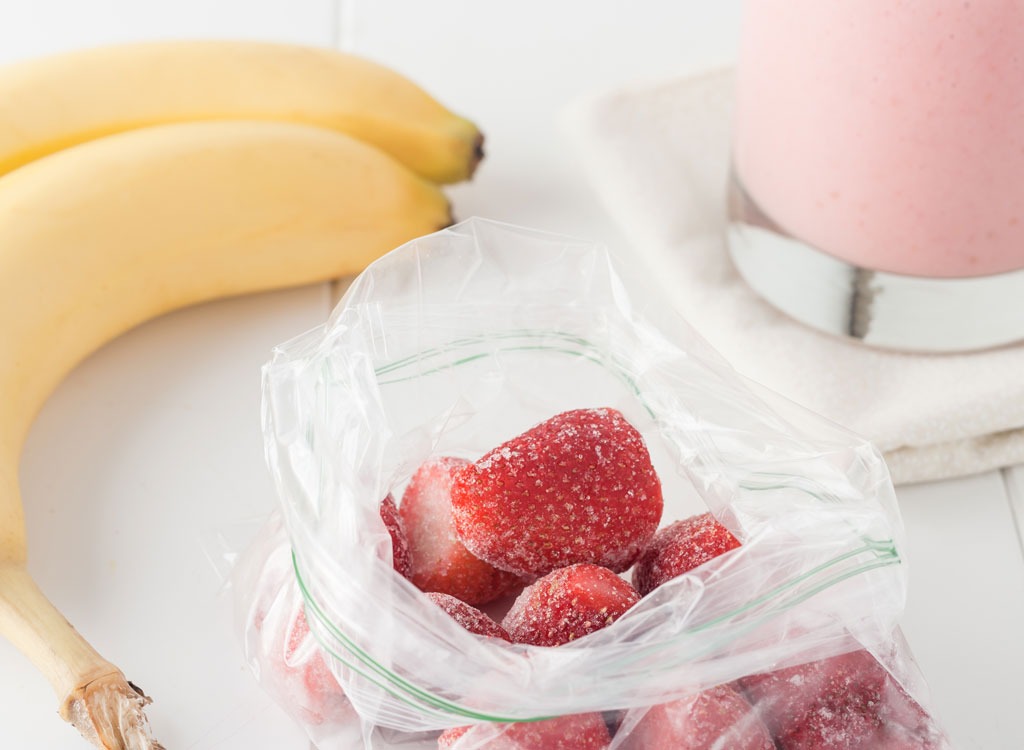
What if we told you there was a way to always have flat-belly staples at your fingertips? And the only thing you needed was something you already have? Would you believe us?
What if we told you that one thing was a freezer? You see, this weight loss tool can help you shed pounds by preserving a bounty of produce at the peak of its freshness. That way, you can reap even more of their slimming nutrients—while getting dinner on the table in a jiffy—on a regular basis.
We’ve done the work and gathered up all the tips, storage times, and freezer food ideas and put them all in this one ultimate guide. Bookmark it and take a peak when meal prep Sunday rolls around and you’re trying to remember that ETNT trick for freezing casseroles. And while we’re on the topic of stocking up on slimming meals, be sure to check out these 30 Staple Weight-Loss Ingredients To Keep Stocked In Your Pantry.
BASIC FREEZING TIPS
Freezer Temperature

It may seem obvious, but ensure that your freezer is set at 0° Fahrenheit in order to best retain the flavor, texture, color, and micronutrient content of the food. This temperature may be off if your power has gone out recently, if the freezer has accidentally been left open for a long period of time, or if you tend to store piping hot food in it often.
What Tools You’ll Need

The container you use to store your food depends on the food it is you’ll be freezing. Sandwiches and wraps can be rolled up in aluminum foil and plastic wrap, berries can be kept in plastic zip-top bags, pesto can be kept in plastic cups, stock in ice cube trays, meal-prep meals in plastic take-out containers, and casseroles in foil baking containers. If you really want to hop on the freezer bandwagon, invest in a vacuum sealer. Removing as much air as possible from your food before freezing it protects the food from freezer burn and flavor deterioration.
Chill Before Freezing

Here’s where things get tricky: you want to chill your food as quickly after cooking as possible to maintain the best quality—but at the same time, you can’t just shove it in the freezer right away because the heat from the food can raise the temperature of the freezer and cause other foods to defrost. The best way to do it is by placing your warm food in a shallow, wide container, and then putting it in the fridge uncovered until it’s cool, and finally transferring it into your freezer. Keep that in mind when you’re whipping up a big batch of one of these soup recipes!
Wrap Food Tightly

The easiest way to avoid freezer burn is by ensuring your food is wrapped as tightly as possible and has the most air removed as possible from the packaging. Adjust your containers as necessary. If you only have a cup of soup, don’t try to fit it in a quart plastic container. Instead, pour it into a zip-top bag and flatten.
Think About Portion Control

This is one of the most essential tips: freeze your food in realistically-sized portions! Because you can’t refreeze once you’ve defrosted, you’ll end up either having to eat 5 pounds of steak in three days, or waste it. Portion control isn’t just a great freezer tip, it’s also essential when it comes to these 30 Healthy Foods You Better Eat In Moderation!
Be Sure To Date!

Label, label, label! You’ll keep your freezer more organized and make it easier on yourself when you know when a food is past its prime. At least mark the date on which you made the food, and if you really want to make it easy on yourself, mark down the expiration date as well using the storage times we’ll list below.
Freeze Food At Peak Freshness

Don’t wait until the end of the week to decide to wrap up that leftover chicken! Foods should be frozen at the peak of their quality to ensure they’ll emerge from the freezer tasting their best.
Defrost Properly Before Reheating

The USDA cautions that perishable foods should never be thawed on the counter or in hot water. They also should not be left at room temperature for more than two hours. The issue is that although the food is frozen on the inside, the outer layer is exposed to room temperature—the temperature where bacteria rapidly multiply. They recommend thawing frozen food in the refrigerator, where it will remain at a constant temperature of 40 degrees Fahrenheit or below. Allow five hours of defrosting time for every pound of food. Foods can also be thawed in cold water (which should be changed every 30 minutes) or in the microwave; both methods require the food to be cooked immediately upon defrosting, though. Speaking of microwaves, do you know of these 17 Healthy Microwave Recipes Better Than Lean Cuisine?
Glass Jars Aren’t Entirely Off-Limits
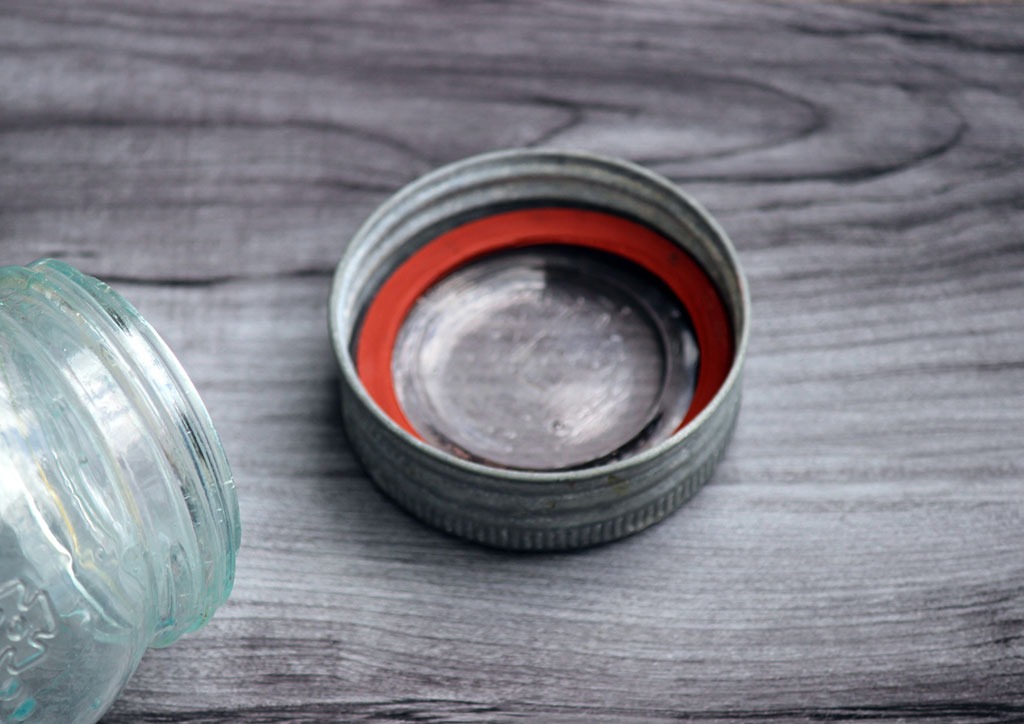
Amid fears of exploding glass when containers are taken from freezer to oven, many people avoid the container completely when freezing. Don’t worry! If you take cautionary steps, glass can be used to freeze your favorite foods. Just remember that liquids expand when they’re frozen, so be sure to freeze using the following steps to prevent broken glass: pour soup, chili, or broth into a jar being sure to stop pouring around 2 inches from the top (to allow for expansion). Cool overnight in the fridge, then place in the freezer uncovered (be sure you can lay it flat). Once the liquid is solid, you can add lids and label with the date.
Try Not To Refreeze Thawed Food

Sticking to this rule is usually the best way to go. Although food that was frozen and thawed properly can actually be refrozen without fear of bacterial contamination, it’s often best not to. That’s because the process of freezing, thawing, and refreezing degrades the texture, color, and taste of many foods, which can make them less appetizing. Just like these 18 Foods You’re Eating Wrong!
The DNF—Do Not Freeze—List

These foods don’t hold up well when chilled to freezing temps: raw and hard boiled eggs, high-water-content produce—like lettuce, potatoes, apples, cucumbers, sprouts, radishes, citrus, and watermelon—soft herbs, dairy products (like yogurt, cream cheese, cottage cheese, and milk) can separate, and anything carbonated.
What To Do After Power Outage

Don’t open the door! Doing so will allow all the stored cold air to escape. This air can actually keep food in the freezer safe for 24 hours. Any longer and you’ll have to dump the food. Or eat it!
RECOMMENDED STORAGE TIMES
Meat

Recommended Storage Time: lamb, 9 months; pork/beef chops, 4-6 months; pork/beef roast, 4-12 months; whole chicken/turkey, 12 months; ground turkey/pork/beef, 3-4 months; chicken/turkey breast, 9 months; any cooked meat, 2-3 months
Talk about pronto protein! Keep a couple chops, roasts, and tenderloins in your freezer so you can always add a lean source of muscle-building to your flat-belly meals. Keep in mind that it often takes a day to properly thaw out meat in the fridge, so remember to plan in advance.
Fruit

Recommended Storage Time: 9-12 months
Frozen fruit isn’t just great for your wallet—it’s also better for your health! While expensive fresh berries are prone to growing mold more quickly than frozen fruit, they also happen to be less nutritious. That’s because fruit that is frozen is picked when they’re ripe and then immediately frozen and stored. On the other hand, fresh berries’ nutrients will degrade over the weeks of shipping time. Plus, some studies have found that the freezing process actually helps to increase the amount of free-radical-fighting antioxidants in the fruit by allowing ice crystals to pierce through cell walls, releasing the bioactive compounds. Most fruit is ok to store, just refrain from freezing watermelon, citrus fruits, apples, and grapes (unless you like snacking on them frozen!).
Veggies

Recommended Storage Time: 8-12 months
We’re talking about low-moisture veggies like carrots, broccoli, corn, and peas. Produce like lettuce, cucumbers, sprouts, celery, peppers, onions, and potatoes should not be kept in the freezer because they’re too high in water content. We love keeping a bag of frozen spinach in our freezer to use in everything from omelets to veggie lasagna! Adding this leafy green to your meals is a low-calorie, nutrient-dense way to boost satiety and lose weight.
Seafood

Recommended Storage Time: lean fish, 6 months; fatty fish, 2-3 months; cooked fish, 4-6 months; smoked fish, 2 months; shrimp, 3-6 months; shellfish, 2-3 months
Yes, even fish can be frozen! Take a look at our exclusive guide to Every Popular Fish—Ranked for Nutritional Benefits to see what to catch and keep in your freezer.
Meals

Recommended Storage Time: cooked casseroles, 3 months; casseroles with eggs, 1-2 months; pizza, 1-2 months; TV dinners, 3-4 months
Meal prep and the freezer go hand-in-hand. Whip up a couple dishes on a Sunday, store in the freezer, and you’ll head into the week with the peace of mind that you can still eat healthy when that late night at the office rolls around.
Bread

Recommended Storage Time: baked, 2-3 months; unbaked, 1 month; muffins, 6-12 months
Don’t blacklist bread from your diet. Healthy versions made from whole or sprouted grains are filled with fiber (look to get at least 3 grams per slice) and protein to help round out your meals and delay hunger pangs.
Nuts

Recommended Storage Time: 3 months
Nuts are actually better off stored in the freezer! That’s because they’re high in oil (those healthy fats, which can easily go rancid from light and heat exposure.)
Dairy & Eggs

Recommended Storage Time: butter, 6-9 months; hard & soft cheese, 6 months; ice cream, 2 months; yogurt 1-2 months; raw eggs, 1 month; milk 3-6 months
Some dairy products, such as yogurt, sour cream, milk, and light cream, will separate when frozen. Storing raw eggs is okay, just as long as they’re not in their shells. (The USDA recommends cracking the egg, whisking it up, and then freezing.) Don’t freeze hard-boiled eggs either. Also on the DNF (do-not-freeze) list? Buttermilk, sour cream, mayo, and cream cheese.
Grains and Cereals

Recommended Storage Time: oats, quinoa & other whole grains, 2 to 6 months in airtight containers; cooked rice, 3 months; cooked pasta, 3 months
Because whole grains are high in nutrients and oils, they’re actually more prone to spoiling if exposed to the air. Freeze your grains to slow down their spoilage time and help retain more nutrients—like energizing vitamin B6!
Waffles & Pancakes
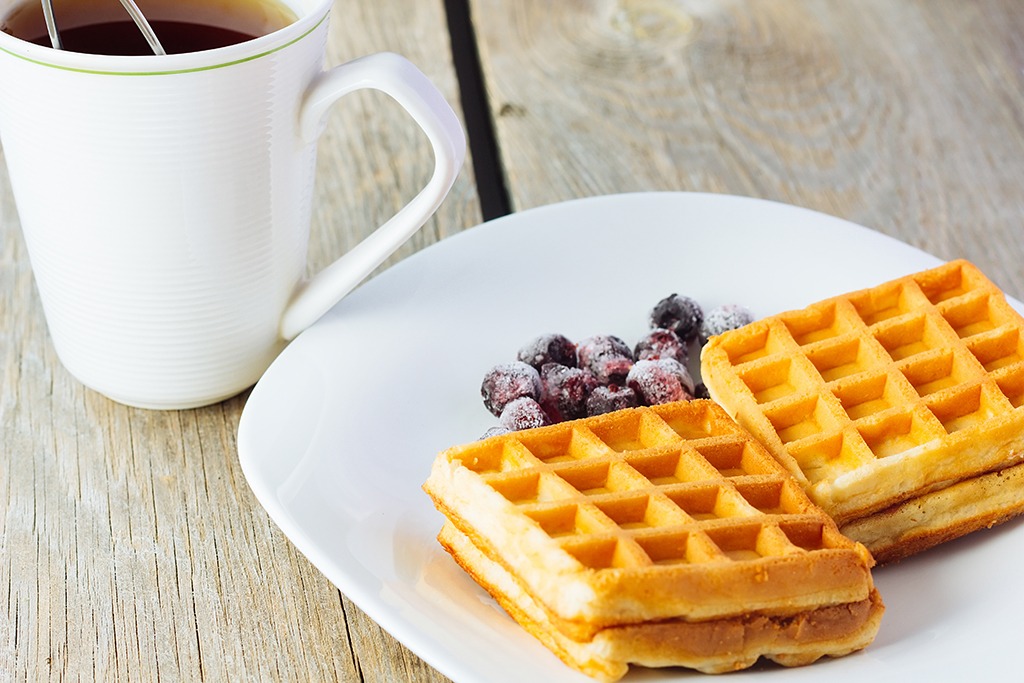
Recommended Storage Time: waffles, 1 month; pancakes, 3 months
Wait! Don’t throw out those extra homemade waffles and pancakes you spent all morning tediously flipping on the griddle. Lay them out on a baking tray and throw in the freezer. Once they’re partially chilled, you can stack them up in a larger plastic bag.
Beverages & Liquids

Recommended Storage Time: juice, 6 months; broth & soups, 2-3 months
Remember that liquids expand after freezing, so don’t put any liquids in glass if you’re planning on freezing them.
Herbs

Recommended Storage Time: 12 months
Nothing livens up a dish quite like fresh herbs but going out to the store every time you’re in need of fresh basil can get tedious—and expensive. If you’ve already taken the step of growing your own plants but the winter frost is slowly approaching, don’t let your plants go to waste—freeze them! We tell you our favorite way how below!
FREEZER IDEAS
Smoothie Bags

Love weight loss smoothies but always in such a rush in the morning? We have a solution for you! Create your own smoothie zip bags that contain all the ingredients you need. Everything is measured out and in the perfect proportions so all you’ll have to do is add liquid and blend!
Oatmeal Cups

Cook once and eat for the whole week with these frozen oatmeal cups. Because taking 45 minutes every morning to stir up some steel cut oats just isn’t plausible, this technique comes in handy for those of us who like getting our daily dose of insoluble fiber. Want to try it out? Check out these 18 Tips to Make Frozen Oatmeal Cups.
Store Pesto and Chopped Herbs & Oil In Ice Cube Tray

Fresh herbs can be kept for up to 12 months in the freezer with the proper storage! Either blend the herbs into a pesto or chop them up and mix with oil. Both pesto and herbs can be poured into an ice cube tray to allow to freeze. (Once frozen, you can transfer to a plastic bag.) This way, the herbs can easily be taken out and used in whatever recipe you need! Just note that storing herbs on their own cause them to turn brown, so we recommend keeping them in a little bit of oil.
Portion Out Meat Before Freezing

If you’ve ever mistakenly frozen a whole package of chicken breasts to only realize you’ll have to defrost the entire chicken ice cube to get one piece, you know how important freezing by portions is. For chicken, breasts can be sliced in half and individually frozen on a baking sheet before placing into a single zip-top bag. The same goes for steak or pork chops. Ground beef can be added to a zip top bag and then divided into portions by pressing with a chopstick or wooden spoon. Always defrost meat a day in advance in the refrigerator—not at room temperature where bacteria can grow.
Store Homemade Stock in Ice Cube Tray
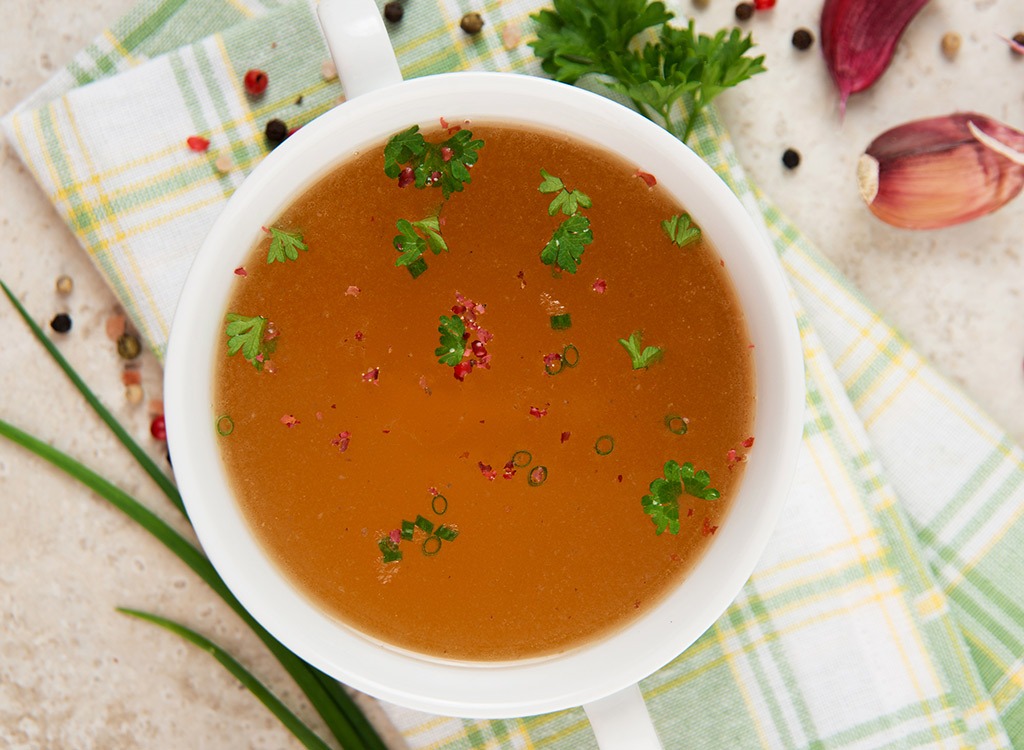
Make your own homemade bone broth to reap its restorative benefits. Animal bones are a great source of collagen and simmering them in broth helps to extract and break down this compound into anti-inflammatory gelatin. “When we ingest it, it acts as an intestinal Band-Aid, protecting and healing the lining of the digestive tract which aids digestion and helps us absorb extra nutrients from the foods we eat,” explains Lauren Slayton, MS, RD. Make your own at home by simmering grass-fed beef bones in water for a few hours. Add some apple cider vinegar and pour into an ice cube tray. Whenever you’re looking for a warm cup, pop a couple out into a mug and heat in the microwave!
Chill Your Unbaked Dough

Whether it’s phyllo or pie dough, puff pastry, or leftover cookie dough, all these unbaked doughs can be frozen for a month if it has raw eggs or three months if it’s eggless. Even pizza dough can be chilled! Just spray the dough with a bit of oil, seal in a plastic bag and freeze (while being sure to squeeze out all the air beforehand). When you want to bake it, allow it to thaw in the fridge overnight, and then pull out 30 minutes before you plan on baking it to allow it to come to room temperature.
Whip Up Breakfast Sandwiches

Need some healthy breakfast ideas? Why not make some egg sandwiches or egg and bean burritos to store in your freezer? Cooked egg dishes can be stored in your freezer for one to two months and make the best breakfasts for hectic mornings.
Blend Up A Compound Butter

Keeping a couple different compound butters in your freezer is a great way to cut down on meal prep time. All you have to do is throw a stick of unsalted, softened butter in a food processor with your favorite herbs (thyme, rosemary, and chives go perfectly with steak; parsley, oregano, and garlic make a delicious garlic bread; and lemon zest, parsley, and garlic are great for shrimp), season with salt and pepper, and roll in plastic wrap to form a freezable log. We recommend using grass-fed butter, because it’s teeming with anti-inflammatory healthy fats, such as omega-3s and CLA.
Keep Some Casseroles

Here’s another meal prep savior. We love making lasagnas, casseroles, and other freezer meals on Sunday and freezing until we’re ready to heat them up later in the week. Just know that uncooked dishes will last about a month in your freezer while cooked dishes last three months. Here’s a tip we learned from The Kitchn: assemble your casserole or lasagna in an aluminum-foil-lined baking dish and place in the freezer. Once frozen solid, you can easily slip the food out of the dish so you can save space by not having to store the bulky dish. When you’re ready to cook, just transfer to the fridge (and put back in the baking tray) to defrost a day in advance, then bake as directed.
Meatballs Are A Must
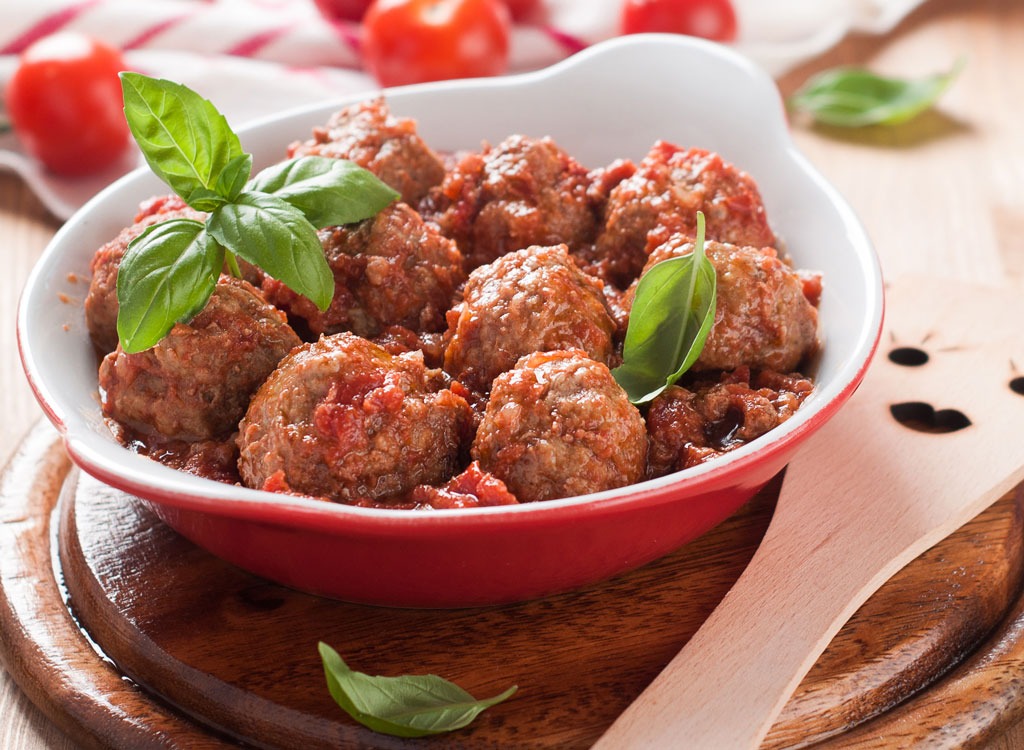
We love meatballs so much, we also included them in our Flat Belly Meal Plan for a Healthy Week. Roll up some lean turkey meatballs on a Sunday, refrigerate until cool, freeze on a baking tray (to keep them from sticking together in the bag), and then transfer to a plastic zip-top bag once chilled. Pull them out to add a boost of protein to your meal whenever the only thing left in your pantry is a box of pasta.








